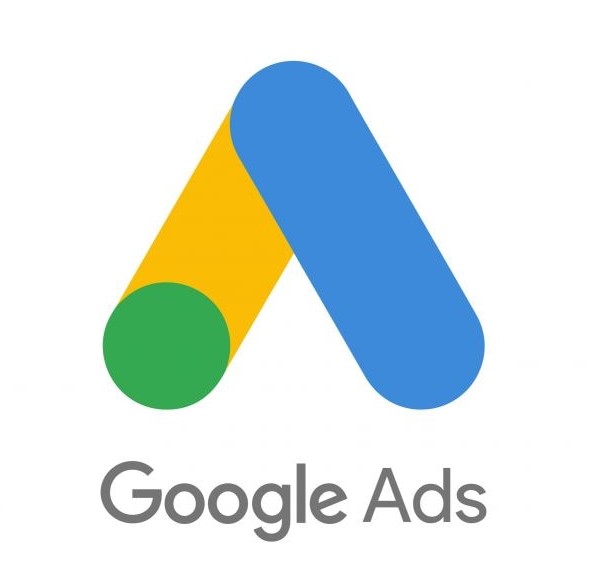PPC

SEM is a digital marketing strategy that involves promoting your website or online content through paid advertisements on search engines like Google, Bing etc.
Search Engine Marketing (SEM) or Pay per click (PPC) or cost per click(CPC) or sometimes simply Google Ads is a form of online marketing where advertisers pay each time a user clicks on one of their ads. It’s a targeted approach to reach your ideal audience and drive conversions by:
• Creating compelling ad copy that resonates with your target audience
• Targeting specific keywords and demographics to reach your ideal customer
• Bidding strategically to maximize your ad spend and ROI
• Optimizing your landing page for conversions and user experience
• Tracking and analyzing your ad performance to refine your strategy
The most common form of PPC advertising is through search engines, such as Google Ads, where advertisers bid on keywords and their ads appear at the top of search engine results pages (SERPs) when those keywords are searched for. PPC advertising can also be done through social media platforms, such as Facebook and Instagram, and through display advertising on websites.
BENEFITS OF SEM
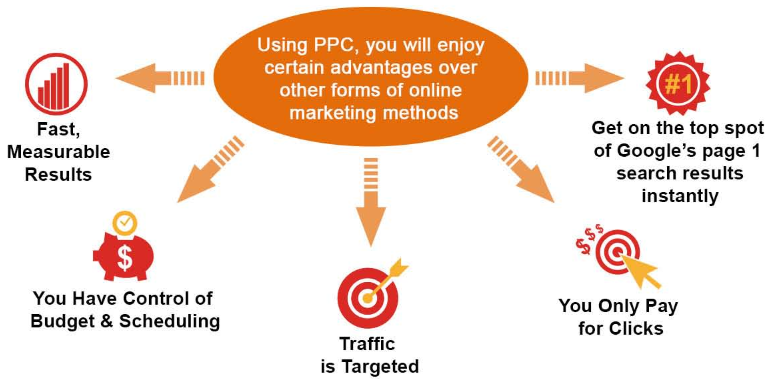
Search engine marketing (SEM) can provide many benefits for a business, including:
- Visibility SEM can help your business get noticed by your target audience and increase your visibility in search results.
- Cost-effective SEM can be a cost-effective strategy because you only pay when someone clicks on your ad.
- Quick results SEM can drive traffic more quickly than SEO.
- Detailed reporting Tools like Google Analytics can provide real-time reports on your SEM campaigns.
- Segmentation You can target specific geographic locations, languages, and online behaviors to ensure you reach the right audience.
- Increased trust Increased traffic to your page through paid ads can improve your trust signals with Google.
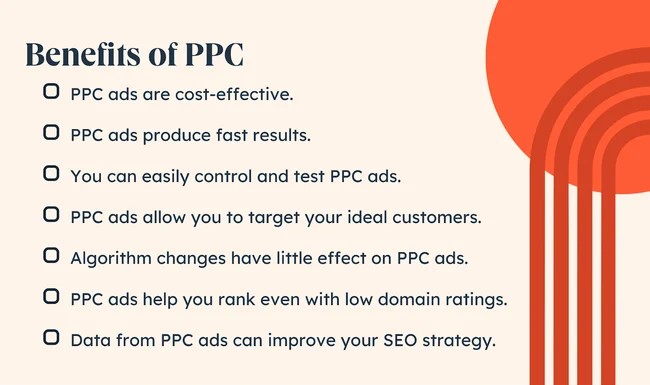
- Integrated with SEO When used together with SEO, SEM can drive sustainable digital growth.
- Strong content Google and other search engines reward companies with informative content that targets their audience.
PPC marketing can help attract new customers and grow your business. By making your brand visible to specific audiences and taking them to high-value pages that support your business goals.
PPC offers several benefits which are not found with SEO .They are quick result,reach your targeted audience,measurable,cost effective,complementing SEO,track your goals,reputation management and branding..
BASIC PROCESS OF SEM

Define your target audience: Identify the demographics of the people you want to reach with your ads, including their age, gender, location, interests, and more.
- Set clear goals: Determine what you want to achieve with your PPC campaign, such as increasing website traffic, driving online sales, or generating leads.
- Choose your campaign type based on your objective. Refine your settings and targeting (audiences, devices, locations, schedule, etc.).
- Research keywords: Use keyword research tools(e.g. Google Keyword Planner, Ahrefs, SEMrush) to identify the terms and phrases your target audience is searching for, and include them in your ad copy and website content. Brainstorm seed keywords related to your business
- Choose the right ad platforms: Decide which platforms you want to advertise on, such as Google Ads, Microsoft Advertising, Meta Ads (for Facebook and Instagram), and so on. Build your ad. Provide your budget and bidding strategy.
- Campaign Setup. Create a new campaign in Google Ads (or other search engines), Set campaign goals, targeting, and budget ,Choose ad formats (text, image, video, etc.), Select relevant ad networks (Google Search, Display Network, etc.) Write attention-grabbing headlines and descriptions for your ads that will entice people to click through to your website. Once the ad goes live, where and when your ad appears, and how much you pay for a click on it are all determined algorithmically based on your budget, bid, campaign settings, and the quality and relevance of your ad. Set a budget: Decide how much you want to spend on your campaign and make sure you stick to your budget.
- Ad Copywriting Landing Page Creation, Create multiple ad versions for testing , Use attention-grabbing headlines and descriptions. Design and develop a dedicated landing page for your campaign, Ensure relevance, user-friendliness, and fast loading speed, Include clear calls-to-action (CTAs), Optimize for mobile devices. Campaign Launch and Monitoring
•Launch and monitor your campaign, Track key metrics (CPC, CTR, conversion rate, etc.), Identify areas for improvement, Use campaign reporting tools (e.g. Google Ads reporting) - Monitor and optimize your campaign: Track the performance of your ads and make adjustments as needed to optimize ls. Set bids for keywords and ad groups
Choose bidding strategy (CPC, CPM, CPA, etc.),Monitor and adjust bids for optimal performance. Use bid automation tools (e.g. Google Ads automated bidding) - Test different ad formats and targeting options: Try different ad formats (like text, image and video) and experiment with different targeting options to see what works best for your campaign. Add ad extensions (site links, callouts, reviews, etc.) to enhance ad visibility
•Improve ad relevance and user experience
•Use ad extensions to highlight unique selling points - Optimization and Improvement
•Continuously optimize and improve campaign performance
•Refine targeting, ad copy, and bidding strategy, Test new ad formats and extensions, Use A/B testing and experimentation ,
Reporting and Analysis , Generate regular campaign reports, Analyze performance data, Identify trends and insights for future improvements, Use data to inform future marketing decisions
Since all platforms that offer PPC advertising want to keep their users satisfied, they reward advertisers who create relevant, trustworthy pay-per-click campaigns with higher ad positioning and lower costs.
Pay-Per-Click Models
Commonly, pay-per-click advertising rates are determined using the flat-rate model or the bid-based model.
1. Flat-rate model
In the flat rate pay-per-click model, an advertiser pays a publisher a fixed fee for each click. Publishers generally keep a list of different PPC rates that apply to different areas of their website. Note that publishers are generally open to negotiations regarding the price. A publisher is very likely to lower the fixed price if an advertiser offers a long-term or a high-value contract.
2. Bid-based model
In the bid-based model, each advertiser makes a bid with a maximum amount of money they are willing to pay for an advertising spot. Then, a publisher undertakes an auction using automated tools. An auction is run whenever a visitor triggers the ad spot.
Note that the winner of an auction is generally determined by the rank, not the total amount, of money offered. The rank considers both the amount of money offered and the quality of the content offered by an advertiser. Thus, the relevance of the content is as important as the bid.
What Is SEM Keyword Research
Search engine marketing revolves around keyword research.
Keywords are the terms and phrases you use for your marketing campaign because your target market is likely to use them when searching for your products or services. You must consider both negative and positive keyword alignment to your ads. Positive keywords are those directly aligned with your products or service, while negative keywords are those that don’t.
The trick here is to match your keywords with user intent. For instance, if you sell sporting equipment, you may want to rank for footballs, soccer nets, sports equipment, tennis racquets, and the like. However, since you’re selling products, you don’t want to rank for soccer practice or basketball games and tennis lessons.
What Are the Different Types of SEM Keywords Used?
There are several types of keywords used for various strategies for SEM to be successful. Let’s look at what they are, shall we?
Broad Match Keywords
Broad keywords command the widest target market. When you use these keywords, your ads will appear whenever a user searches for queries that include any words on your key phrases.
Phrase Match Keywords
Phrase match keywords offer more control compared to broad match keywords. Your adverts will only appear when users search for your key phrases in a designated exact order. There can be other words before or after that phrase, though.
Exact Match Keywords
These keywords, as the name stipulates, must be exact. Users much search for your exact given keywords down to the last details for your ads to appear. This is the most complicated keyword type, but it’s also the one with the highest possibilities of converting.
Negative Keywords
Negative keywords are the terms and phrases you would rather not target. These are varieties of the other types of keywords that you don’t want to use for your marketing campaign. They could be related to your keywords but still be unrelated to your search intent, ad copy, or campaign.
All this sounds complicated, right? How do you know which ones meet your user intent and work best for your campaign? It’s advisable to hire the best search engine marketing company you can find so you can get professional services.
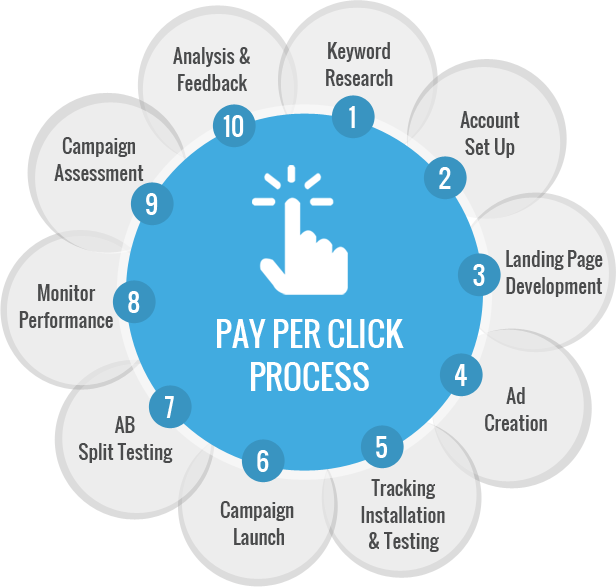
PPC optimization is a continuous process that involves playing with different negative keywords, adjusting bidding strategies, and making other changes to ensure you are getting the most out of your search .
AD TYPES & SOME DETAILS
GOOGLE ADS
How many different types of Google ads are there?
One thing to make clear right off the bat is that when people ask this question, they are most likely referring to Google Ads campaign types. There are nine types of Google Ads campaigns, and within each campaign there are different ad formats/subtypes.
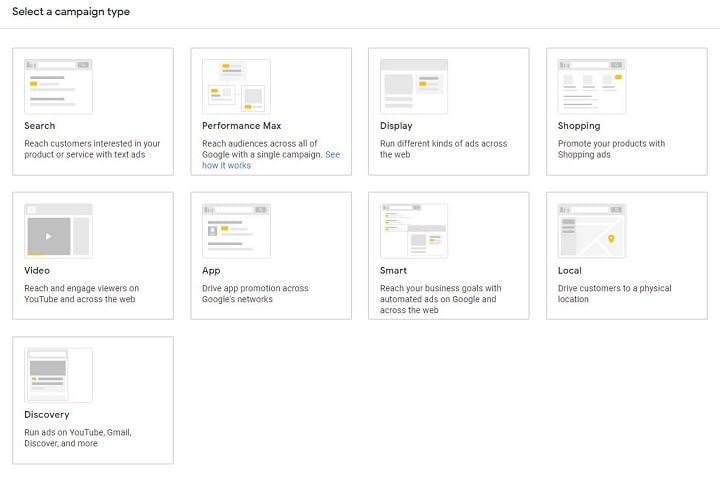
Given all campaigns, there are 22 types of Google ads:
- Search ads
- Responsive
- Call-only
- Dynamic
- Display ads
- Single image
- Responsive
- Video ads
- Skippable in-stream
- Non-skippable in-stream
- In-feed
- Bumper
- Outstream
- Masthead
- Shopping ads
- Product Shopping
- Local inventory
- Performance Max ads
- App ads
- For downloads
- For engagement
- Discovery ads
- Local ads (soon to be PMax)
- Smart ads
- Search
- Display
- Local Services Ads
- Google Guarantee
- Google screened
Let’s go over each one in more detail.
1. Google Search campaigns
What they are: Search campaigns are known as the “OG” type of Google ad.
How they work: You bid on keywords relevant to your offer so that when people search something related (or identical) to those keywords on Google, your ad will show at the top of the results page (assuming your ad wins the Google Ads auction).

An example of a Search ad out in the wild.
Who they’re best for: Any business can leverage this type of Google Ads campaign. However, since standard Search campaigns are so dependent on commercial intent searches, they can be particularly effective for businesses trying to drive leads or purchases.
Types of Google Search ads
Within Search campaigns you’ll get the following ad format options:
- Responsive search ads: These ads cycle through up to 15 headlines and four descriptions to serve ads tailored to individual queries in real time. Check out our responsive search ad template for tips on RSA ad copy.
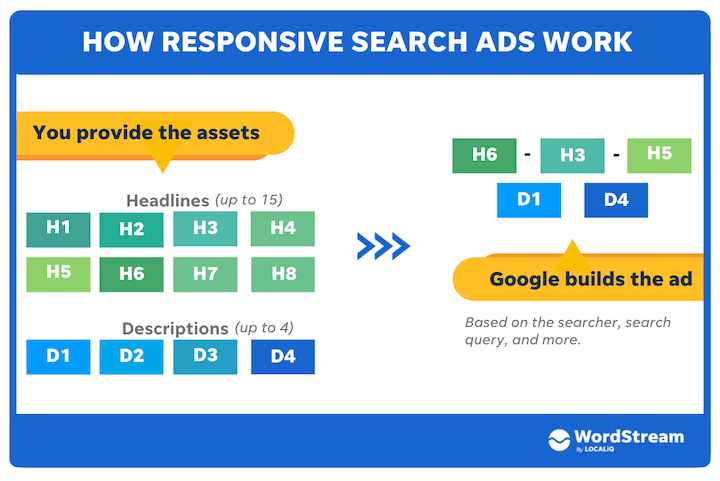
- Call ads: These ads are meant to drive calls to your business by promoting a clickable phone number as the headline. Be sure to use call tracking if you use this ad type!
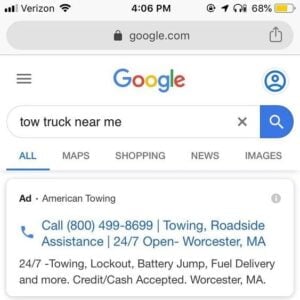
- Dynamic Search Ads: Dynamic Search Ads are created for you by Google using information from your website content and a short description blurb that you provide. They look identical to any other Search ad when shown on the SERP, but can be helpful for businesses with a nicely built-out website that want to leverage that (and Google) to freshen up their ad copy strategy.
Google Search ad pros & cons
Pros:
- Easy to set up. Check out our Search campaign tutorial here.
- Targeting users based on particular keywords mean you’re attracting higher-intent traffic.
- High-intent traffic means high return on investment. The average ROI for search ads is 200%.
Cons:
- Tend to be highly competitive.
- Text-based ads don’t provide much opportunity for branding and creativity.
- Low keyword volume or high competition could lead to low or pricey traffic. Find out what you can expect within your industry with our Search Ad benchmarks.
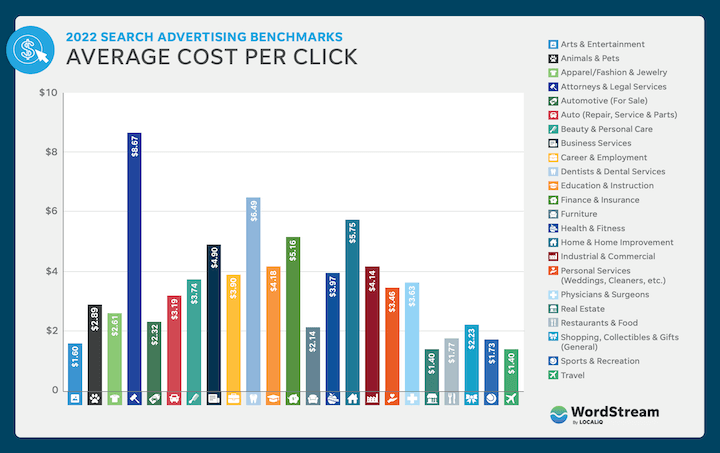
2. Google Display campaigns
What they are: Display campaigns are totally different from Search campaigns. Instead of text-based ads that appear when someone is actively searching for something, they’re image-based and show passively on websites within the Google Display Network (GDN) as people browse them.
How they work: Display campaigns are all about who you’re showing to and where. Instead of targeting keywords, you target placements, audiences, and topics.
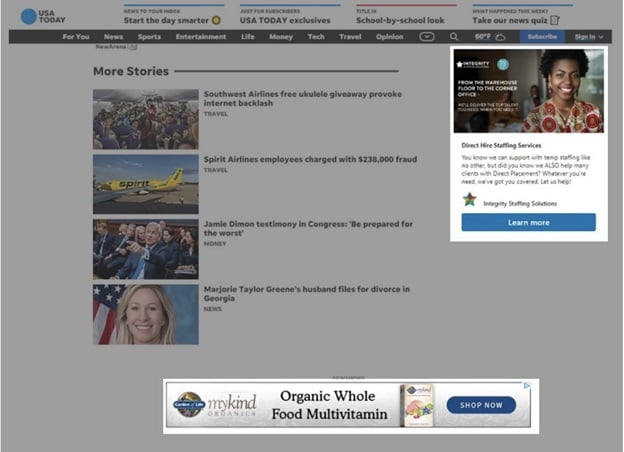
You can find more Display ad examples here.
Who they’re best for: The biggest benefit of Google Display ads is that they drive brand awareness since they achieve high volumes of relevant impressions. And increased brand awareness leads to better results with your other campaigns.
This is especially helpful if your business falls into a niche market and your Search campaigns are sluggish. A Display ad can trigger more branded searches that can then boost your Search campaign. In fact, you can track any indirect conversions that originated from a Display campaign through view-through conversions.
Types of Google Display ads
Here are the available ad formats for Display ads:
- Single image display ads: These are static ads that you upload from designs you’ve already created.
- Responsive display ads (RDA): Similar to responsive search ads, RDAs cycle through combinations of images and text to serve the best performing ad possible in various placements.
Google Display ad pros & cons
Pros:
- Generally cheaper than Search campaigns.
- Visual ads can be more appealing to new audiences.
- Tons of customizable targeting options. (You actually can target keywords with Display ads, but audiences and topics are more common.)
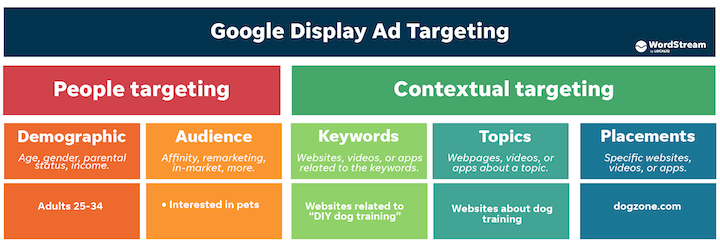
Cons:
- A higher volume of impressions can mean lower click-through rates. Can be hard to measure their success.
- Best when used in conjunction with other campaign types. Display creates awareness, but Search might be the final campaign to seal the deal.
Are you taking advantage of all that Google Ads has to offer? Find opportunities to optimize your account with the Free Google Ads Performance Grader.
3. Video campaigns
What they are: Video ads that can show on video or website content.
How they work: Video campaigns function similarly to Display campaigns in that you bid to have your video show on specific placements on YouTube or across the web to specific audiences. The main difference is that Video campaigns have different types of ad formats available.

An example of a skippable in-stream Video ad.
Who they’re best for: Businesses that have a hard-to-describe product or offer might benefit from Video campaigns so that they can show their audience an offer rather than tell them about it. Since they function similarly to Display campaigns, this type of Google Ads campaign can also be ideal for those who are looking to drive brand awareness in specific target markets.
Google Video ad types
The types of Google Video ads you can create are as follows:
- Skippable in-stream ads: Video ads that appear before, during, or after streamed content that viewers have the option to skip after 5 seconds.
- Non-skippable in-stream ads: Video ads that appear, before, during, or after streamed content that viewers have to watch the whole way through (maximum of 15 seconds).
- In-feed video ads: A thumbnail image of your video with text that invites viewers to click to watch for more. These appear on placements like YouTube search results, next to related YouTube videos, and more.
- Bumper ads: Non-skippable ads that are 6 seconds or less that play before, during, or after another video.
- Outstream ads: Mobile-only video ads that only appear on Google Video Partner sites—not YouTube. They automatically play for viewers with the sound off to invite viewers to watch the full version with the sound on.
- Masthead ads: Only available on a reservation basis through a Google sales rep, these ads auto-play without sound for up to 30 seconds. They appear at the top of YouTube’s homepage feed.
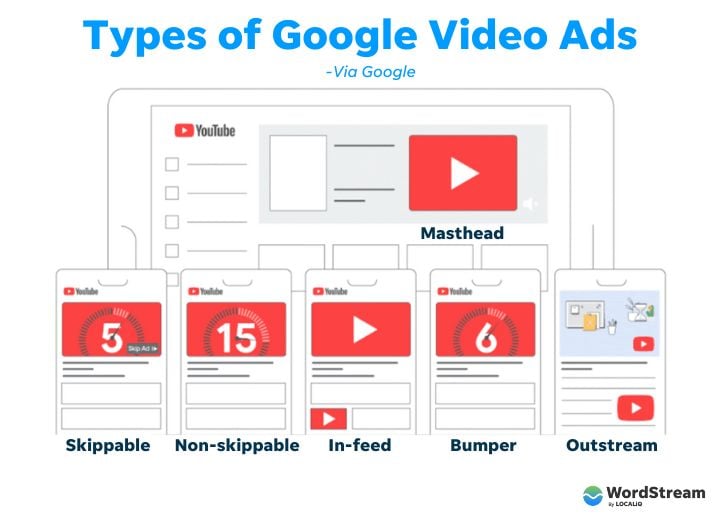
You can learn more about these ad types in our guide to advertising on YouTube.
Pros & cons of Google Video ads
Pros
- Video content is engaging, immersive, and can drive action through emotion.
- Lots of ad format, bidding, and targeting options. Video campaigns are extremely customizable.
- Can showcase a value proposition that otherwise may be difficult to convey in a regular text-based ad.
Cons:
- Creating video ads takes up time and budget.
- These four fine-print settings to be aware of.
- Spaces like YouTube are highly competitive.
4. Google Shopping campaigns
What they are: Shopping campaigns are vital to any business selling products. They are the visual ads you see on the Search and Shopping tabs on Google.
How they work: This type of Google Ad campaign survives off a product feed you provide—which lives within Google Merchant Center. Shopping feeds hold all your product information, called attributes, about your products like price, color, quantity, and more.
Google creates your Shopping ads and chooses when to serve them on the SERP based on the details provided in your feed. Because of this, the structure of your Shopping campaigns will be different from other campaign types. Instead of “ad groups” you’ll have “product groups” to separate out categories of products.
To narrow your targeting since your product feed subs in for your keywords, you’ll rely on negative keywords and other targeting parameters, like location settings and more.

An example of Shopping ads.
Who they’re best for: Ecommerce advertisers looking to increase sales online and local retailers looking to drive store traffic (see local inventory ads below).
Types of Google Shopping ads
There are two types of Google Ads created for your Shopping campaigns:
- Product Shopping ads: These are the regular Shopping ads you see on the SERP when looking to buy something online. They include a picture of your product along with any relevant information, like price.
- Local inventory ads: If you submit your store inventory to Google Ads Merchant Center, these ads will show to nearby searchers. These ads are identical to Product Shopping ads, but include whether the shown item is in stock for in-store pickups.
Google Shopping ad pros & cons
Pros:
- Visual ads. Shopping ads contain real photos of the product you’re selling, which makes them more attractive than text ads.
- Shopping ads can appear both in the regular Search tab and the Shopping tab. Also, more than one of your Shopping ads can appear for a given user search and, if relevant, a Shopping ad and a text ad can appear at the same time.
- Shopping ads allow you indicate special attributes like “Black-owned,” “price drop,” and more.
Cons:
- No keyword targeting means you have to be on top of your negative keyword game, or you’ll likely see irrelevant traffic to your landing pages.
- Your shopping feed needs to be optimized in order to create high-quality ads for the right consumer.
- Requires Merchant Center account setup and integration with your ecommerce site, which can be involved.
5. Google Smart campaigns
What they are: Smart campaigns are fully automated ads in Google.
How they work: Smart campaigns are created and managed by Google, you’ll just have to provide some initial information during the setup process. These campaigns advertise your business across Google Search, Maps, and other placements like YouTube or partner sites.
When creating a Google Ads account, Google will actually prompt you to create a Smart campaign:
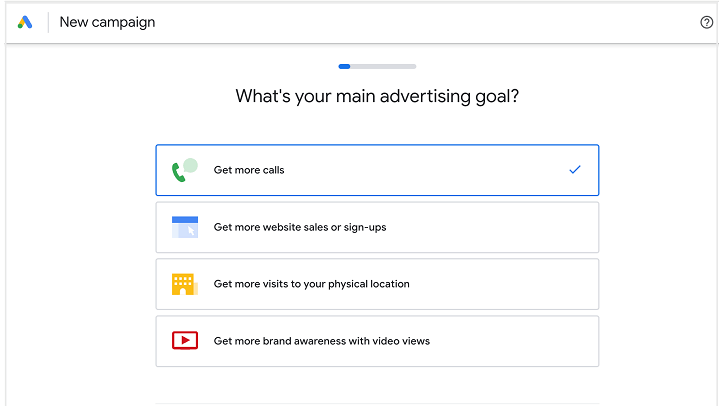
It will ask for information like your business’s website URL, your ideal keyword themes, and your business’s address or Google Business Profile to create a customized strategy for you. The drawback, of course, is you won’t necessarily be able to pick and choose exactly how your campaign will serve.
Who they’re best for: Advertisers that don’t have a lot of time to manage their Google Ads account could benefit from this fully automated type of campaign, but in general, we don’t recommend using Smart campaigns since you don’t have much control.
Types: Smart campaigns can serve Search ads or Display ads just like the ones mentioned above.
Pros and cons: Since Google creates and manages this campaign type, you’re saving lots of time. But lack of manual control can mean a lot of trial and error with Google’s machine learning.
6. Google Performance Max campaigns
What they are: Another automated type of Google Ads campaign, Performance Max wraps up all your assets in one swoop for goal-based advertising across all of Google’s network. This means that your ads could show on the SERP, in Google Maps, across the Google Display Network, YouTube, Gmail, and Discovery networks.
How they work: You give Google a main goal along with assets and information about your products or services, so that the platform can auto-generate ads across all available placements. You’re letting Google use machine learning to identify the best-performing asset combinations and placements.
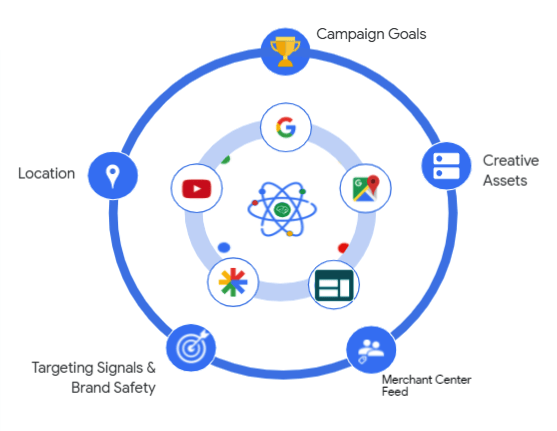
Who they’re best for: Since Performance Max requires a goal to be set in order for it to work, it’s best for accounts that have specific conversion goals already set up. Also, as mentioned in our Performance Max guide, it’s best for ecommerce businesses at this time (as opposed to lead gen businesses).
Types: Performance Max will put out almost every type of ad possible across all placements.
Performance Max pros & cons
Here are the pros and cons of Performance Max campaigns:
Pros
- Target multiple placements with just one campaign.
- Focus on performance drivers. Testing and assessing everything in one place can help you make strategic decisions faster.
Cons:
- Requires a marketing budget some advertisers may not be able to afford. PMax needs to be able to collect a good chunk of data to fully optimize out of its initial learning period, so if you don’t have at least $50-100 to spend per day you may fail to see your desired results.
- Not for beginners. PMax requires you to provide a number of assets, including text, images, logos, videos, feeds, audience data, geo-targeting preferences, and more. An advertiser totally new to the PPC game might not yet know what would be best to plug into a Performance Max campaign.
- Not recommended for lead generation businesses.
- Requires an understanding of how your other campaigns are impacted.
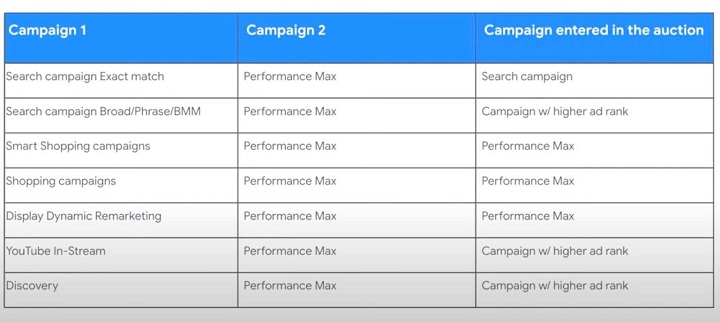
When PMax and Search campaigns have overlapping targeting, here’s which campaign will get entered into the auction. (Image source)
7. Google Ads App campaigns
What they are: App campaigns are meant to drive downloads or engagement with your app and can appear on Search, Google Play, YouTube, Discover on Google Search, and the Google Display Network.
They look similar to that of other campaigns with a few lines of text and an image of the app depending on the placement.
How they work: The ads are created using the text and images provided in your app store listing, and you decide on other campaign settings like budget or location. Google takes the campaign information and settings you provide to know when to best serve your app ad for you.
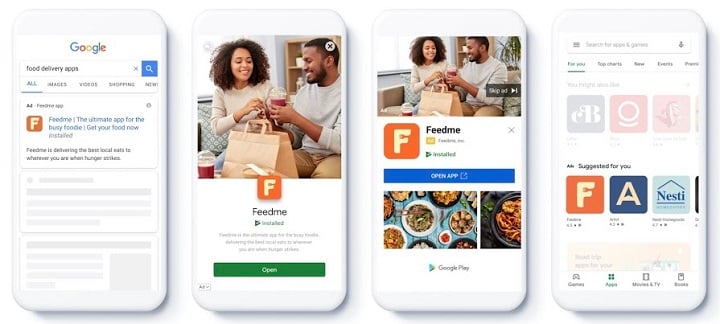
Who they’re best for: App campaigns are only applicable to advertisers that have an app.
Types: There are three different types of App campaign ads:
- App installs: These will have a download button
- App engagement: Drive existing app users to a specific landing page.
- App pre-registration (Android only): Build an audience for your app before it’s released on Google Play.
8. Google Ads Discovery campaigns
What they are: Discovery is another automated Google Ads campaign type that allows advertisers to show ads across all of Google’s feed placements to increase—you guessed it—discovery of your products/services.
Those feed placements include Gmail (the Promotions and Social tab feeds), YouTube (the Home feed and Watch Next feed), and the Google app (the Discover feed).
How they work: Similar to other campaigns run by Google, you have a say in the ad assets you provide, like text and images, but when it comes to managing actual placements of your ads, the platform takes care of it all for you.
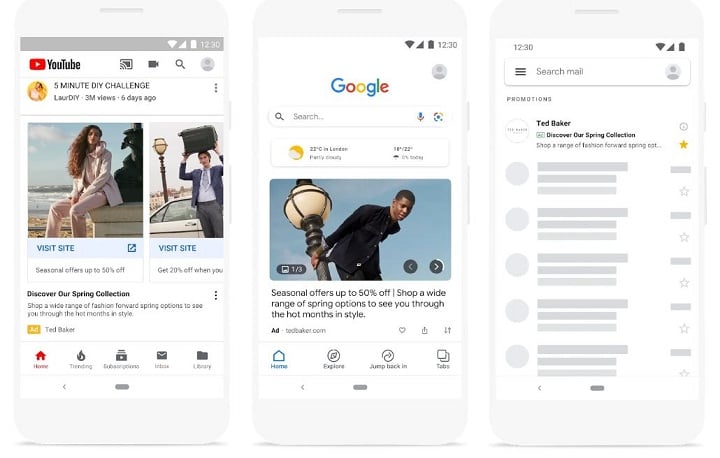
Who they’re best for: If you’re looking to reach new audiences, Discovery is the name of this campaign’s game, so it can be a great option for businesses looking to drive brand awareness via media-rich ads.
However, with a potential audience of up to 3 billion, only Smart Bidding options, and full automation, this type of Google Ads campaign requires you to put your foot on the gas without expecting to do a ton of campaign oversight. If you like a lot of manual control, this campaign type may not be for you.
Types: Google creates text, image, and video ads across users’ feeds within Gmail, YouTube, and the Google app.
Pros and cons: Helpful for businesses looking to grow that don’t have a huge audience yet, but offer little control over placements.
9. Google Ads Local campaigns
What they are: This last type of Google Ads campaign is being replaced by Performance Max. However, if you have a legacy Local campaign already in your account, or still see it as an option when you create a new campaign, you may be wondering what it’s all about. Well, we have the answer: your Google Business Profile.
How they work: You link your Google Business Profile to your account in order to promote your store or service locations across Google Maps, the Search Network, YouTube, Gmail, and the Google Display network.
Similar to some of the other cross-placement campaigns, you don’t get a ton of control over how your ad looks or serves since you’re just uploading assets, adding a budget, and a few lines of text. Google uses that information you provide to know how to best serve your local ads.
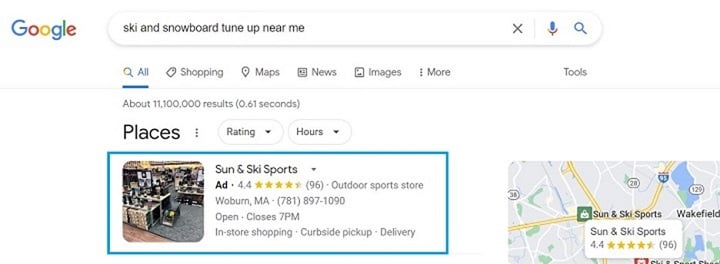
Best for: I would no longer recommend this type of Google Ads campaign for local businesses since they’ll be upgraded manually or automatically to Performance Max campaigns optimizing for store goals by 2023. Given the budget needed for PMax campaigns, I’d instead recommend a local inventory Shopping campaign for ecommerce and retail, or a Local Services Ad for service-based businesses.
10. Google Local Services Ads
What they are: Google Local Services Ads (LSAs) are not run through the Google Ads platform, but they do appear on Google Search. When customers click on the ads, they can either call your business or message you.
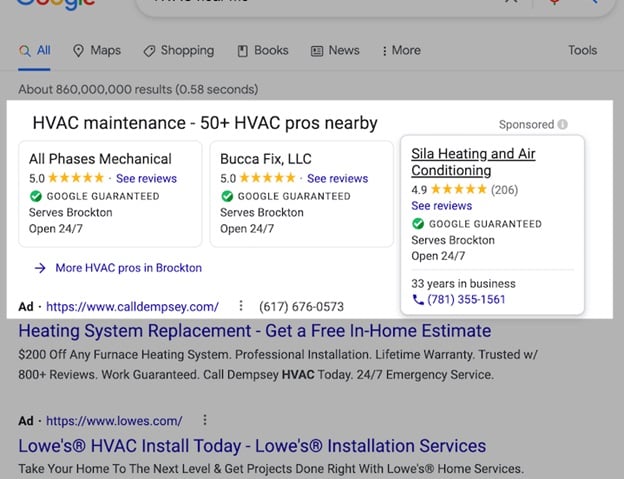
How they work: Businesses complete their Google Business Profile and go through an extensive verification process. Once you’re approved, your ad will appear with a green badge or check-mark, and you only pay when a customer contacts you from your ad
Types of Google LSAs
- Google Guaranteed LSAs are for blue-collar industries like plumbing, housekeeping, and locksmiths.
- Google Screened LSAs are for white-collar industries like real estate, lawyers, and accountants, and Google protects customers up to $2000 for problems on the job.
Pros and cons of LSAs
Pros
- Pay per lead.
- Ads show at the top of the SERP, above Seach ads.
- Any reviews you get on your Google Business Profile will appear on your LSA profile and influence your ranking.
Cons
- Require a 3.0 average review rating to remain active.
- Any reviews you get on your LSA profile will disappear from your organic Google Business Profile when you stop advertising. Learn more with these seven LSA tips.
BING ADS
Microsoft Ads is an advertising platform that allows you to advertise on the Bing search engine and its partner sites. Bing is Microsoft’s search engine, less popular than Google in the Slovak market.
Despite Google’s dominant position, Microsoft Ads can be an effective way for some companies to reach their target audience and increase their online visibility.
It is a PPC (pay-per-click) platform where the fundamental advantage is that you only pay for clicks on your ad.
Number of Bing users
In Slovakia, Bing is a minority search engine in terms of search. Google dominates the market. According to some estimates, approximately 5-10% of internet users use Bing and its partner sites.
The business segment or the market influences search traffic on a particular platform. Different industries and market segments have different needs and preferences, which may reflect how and when users search for information online.
Bing user statistics and artificial intelligence (AI)
In February 2023, more than 1.1 billion people per month visited the Bing search engine. Following the launch of Bing Chat AI, the number of daily active users has climbed to 100 million, signaling the service’s growing popularity.
According to Microsoft statistics, 67.65% of Bing users are men, and 32.35% are women. People between 25 and 34 use it the most (30.70%), followed by the 18 to 20-year-old group (22.17%).
As a point of interest, the average age of a Bing user in May 2022 was 45 years old.
Searches via computers
Bing search engine users are predominantly computer users, so ads on the search network are more likely to appear across computing devices. This is also due to the default setting of the Bing search engine on Windows devices.
Currently, 54.6% of visits come from desktop devices globally, while 45.4% of visitors come from mobile devices. In Slovakia, of course, these numbers vary.
Is it worth investing in Microsoft Ads?
Definitely yes. Competition in this advertising system is still shallow, so the cost per click is significantly lower than the more commonly used Google Ads.
Although a 5-10% share of the search market in Slovakia sounds like a small number, it represents tens of thousands to hundreds of thousands of users. This is a significant group that should be noticed, as less competition can make using Bing for some businesses’ advertising campaigns a more effective strategy.
You may be surprised by the results of Bing usage statistics in the US market:
- 7.5 billion monthly PC searches
- 142 million unique users on PC
- 37.7% PC market share
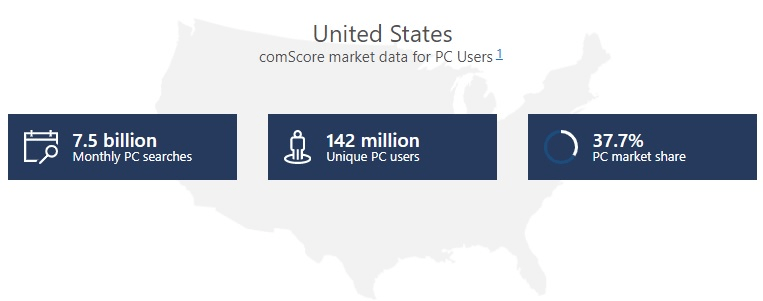
Types of Microsoft Ads Campaign Targets
For a successful campaign, it is crucial to have a clear objective. By setting this goal, Microsoft Advertising will help you achieve optimal results and recommend the most appropriate features for your campaign.

Types of ads you can create with Microsoft Ads
Microsoft Ads offers us to create a wide variety of ad types. Each ad appears in a different context and serves different styles of communication.
Some of the most commonly used ad types include:
Responsive search ads
Responsive search ads simplify ad creation by allowing you to provide up to 15 headlines and 4 descriptions, from which Microsoft Advertising will automatically create and test the most effective combinations. Ineffective variations are no longer displayed, and the best ones are shown repeatedly, which can improve the performance of your campaign.
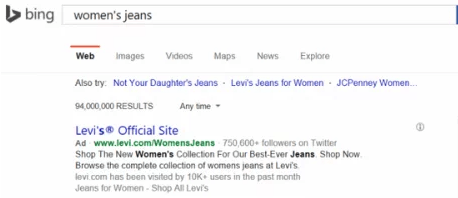
Dynamic search ads
Dynamic search ads automatically create and target relevant ads based on your website content, reducing your workload and adapting to new queries to increase conversions. This type of advertising is very similar to responsive advertising.
Content ads (Audience ads)
Microsoft Audience Ads is a native advertising service that drives traffic to advertisers through non-search placements on various devices and sites such as MSN, Outlook.com, and Microsoft Edge.
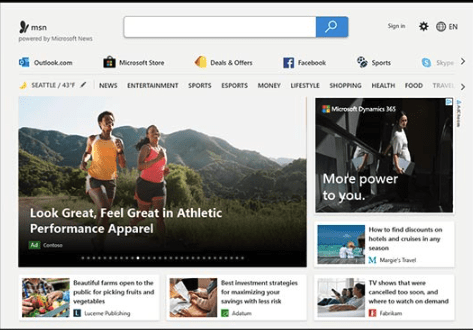
Product ads
Product ads include custom images from product catalogs created in the Microsoft Merchant Center and specific promotional text, pricing, and retailer details. This type of ad offers a visual and detailed view of the products shown, which can effectively increase interest and interaction from potential customers.
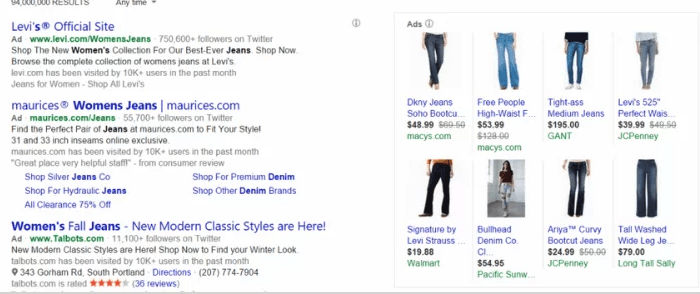
Importing ads from Google Ads to Microsoft Ads
If you have created successful campaigns in your Google Ads account, importing them into the Microsoft Ads interface is possible.
With just a few clicks, you can easily import your campaigns from Google and advertise on Bing within minutes.
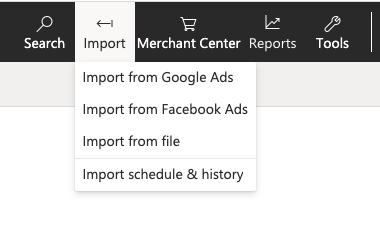
Creating a search campaign
- In your Microsoft Ads account, proceed to the campaign level, where you select Create:

- The second step involves selecting the campaign goals you want to achieve. In our case, we will choose website traffic – Visits to my website:

- We will select the Search ads option and move on to the next step:
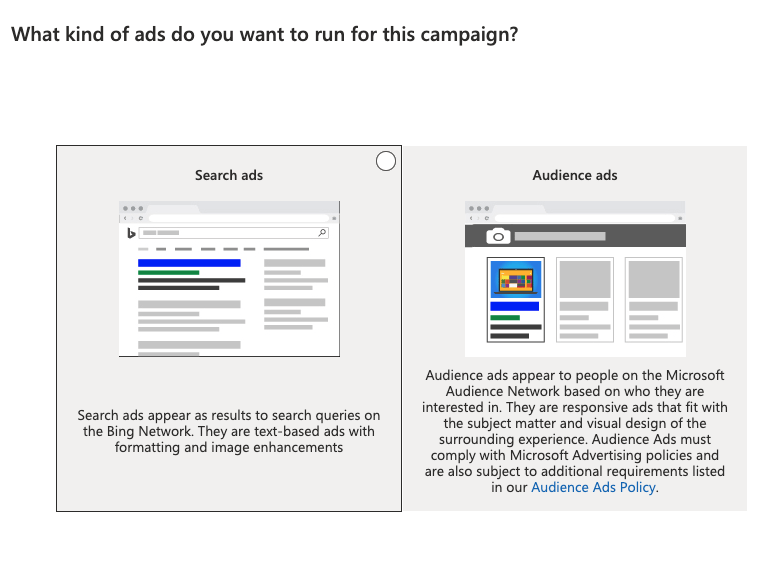
- In the campaign settings, the first point is to set the budget, title, country targeting, or regions:
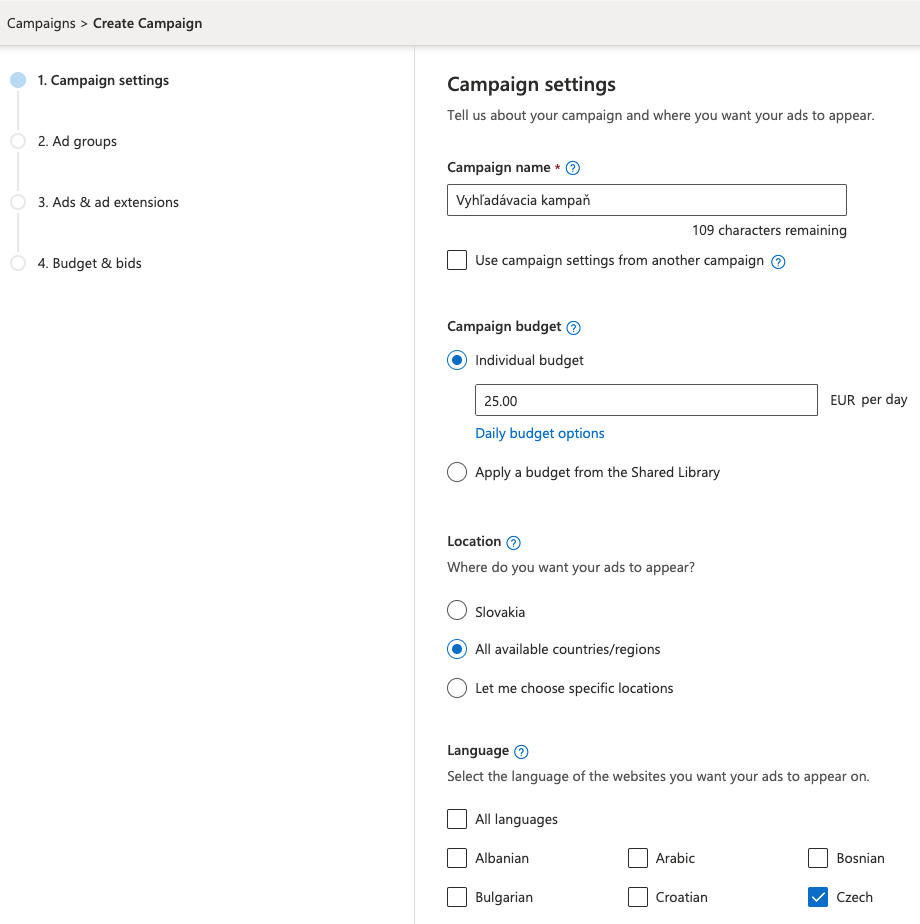
- Search campaigns are displayed based on search queries, i.e., keywords. In this step, you choose words relevant to your website or the service or goods you offer:
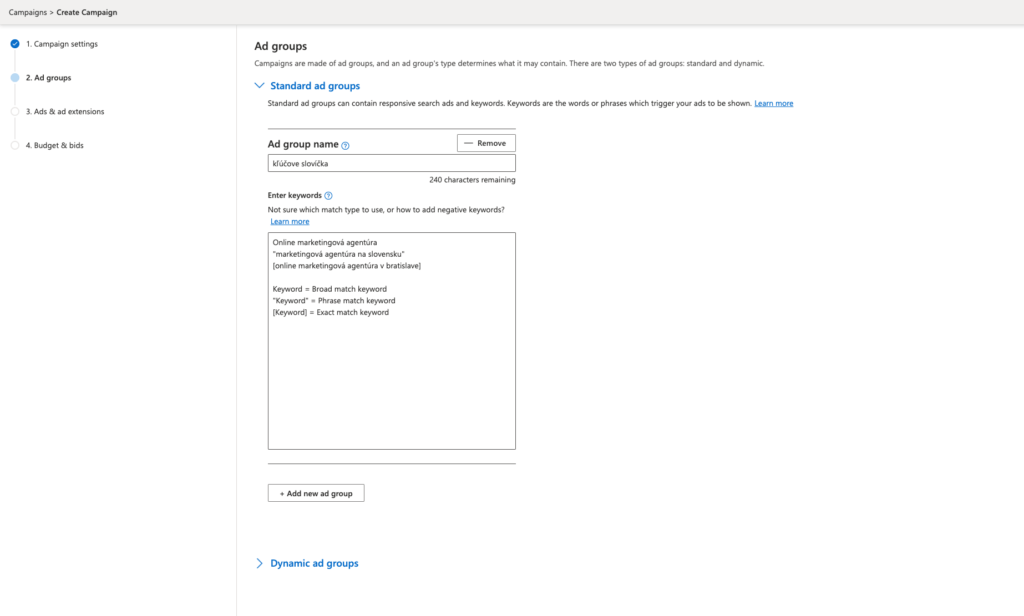
- The sixth step to take care of. Creating the actual ad texts, descriptions and adding extensions that will be displayed in Bing:
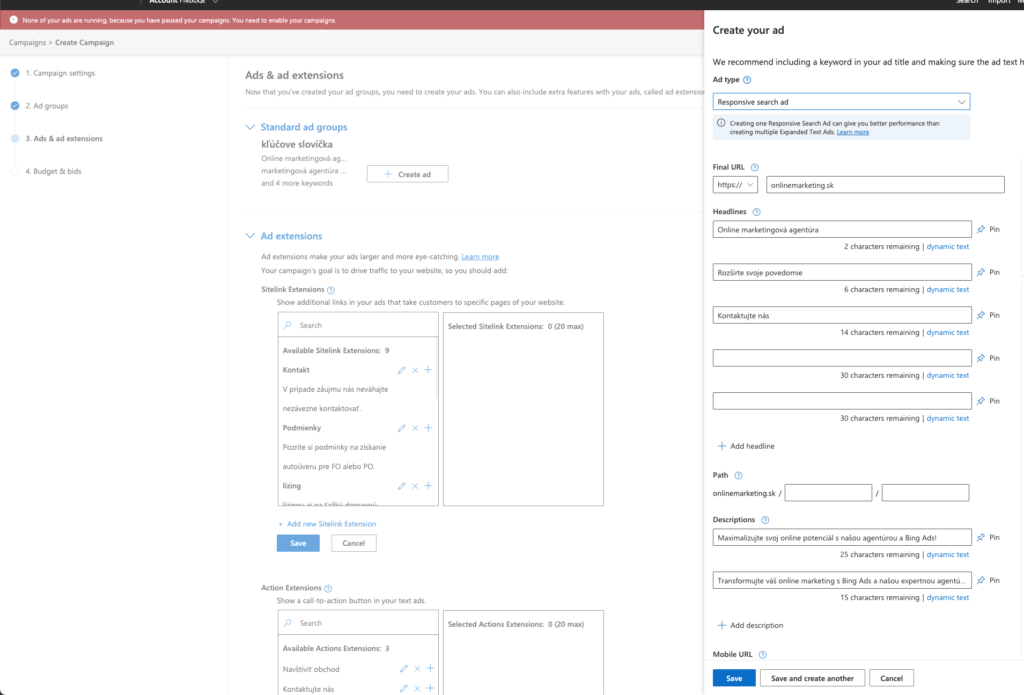
- The last step consists of setting budgets, adding payment methods, and setting up billing information. And the search advertising is up and running.
Measuring results and setting up analytics
For Microsoft Ads campaigns to work correctly, you will need the correct measurement setup.
The advantage is that it’s easy to set up directly in the Google Tag Manager interface, just like other ad systems.
The most important part of the measurement is the UET tag (Universal Event Tracking). This code is added to a web page to track visitor activity and allow for more effective targeting of ad campaigns. This code is similar to the Base Tag in the Google Ads interface.
Deploying the UET Tag
The actual installation on the website is not complicated.
The option to automatically assign the tag to your site via Google Tag Manager can be done entirely automatically. You log in with the email you use to use Tag Manager, and within a few minutes, you have a working UET tracking code ready to go.
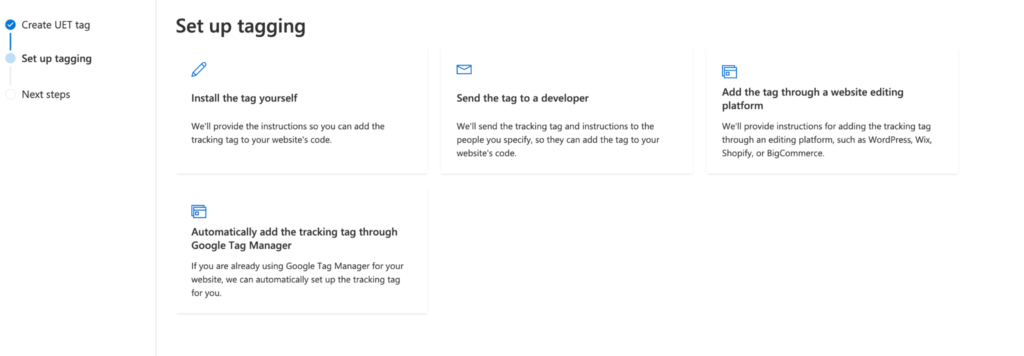
Checking the correct settings is easy. Microsoft has a Google Chrome browser extension will allow you to check the presence and correctness of your tag setup and conversions.
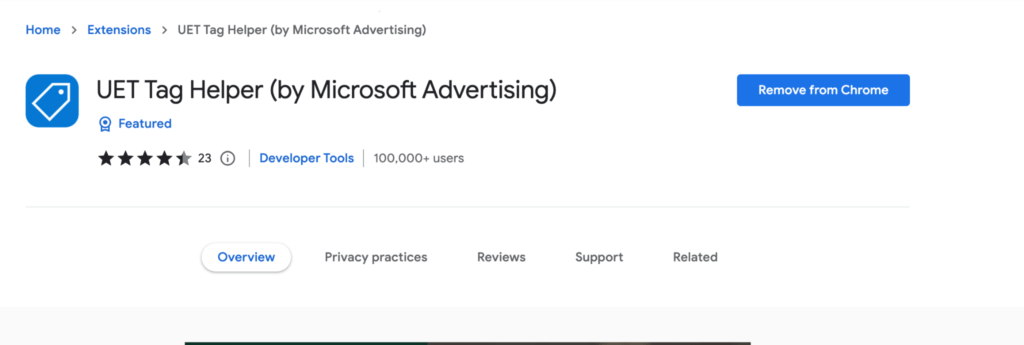
Conclusion
Microsoft Ads offers effective and low-cost advertising options, despite Bing being less popular than Google in the Slovak market. Increased visibility, less competition, and lower advertising costs can greatly benefit businesses looking for alternatives to advertising on Google.
The variety of ad formats, the ability to import from Google Ads, and the ease of tracking results through UET tags make Microsoft Ads an opportunity to expand your online portfolio.
CHARGES
BASIC AD BUDGETS
Small Size Business
Enrich your growing community.
- Appx Ad Spend Monthly ₹10,000
- Campaign – 1
- AD Groups – 2
- No. of Keywords-50
- Search Ads
- Conversion Tracking
- PPC CAMPAIGN MANAGEMENT
- Competitor Analysis – Yes
- Keyword Optimization – Yes
- Ad Copy Optimization – Yes
- REPORTING
- Reports – Monthly
- Support – Email, Phone
T&C Apply
Mid Size Business
Reach new heights.
- Appx Ad Spend Monthly ₹20,000
- Campaign – 2
- AD Groups – 6
- No. of Keywords-100
- Search Ads
- Display Ads
- Video Ads
- App Promotion Ads
- Remarketing List
- Conversion Tracking
- PPC CAMPAIGN MANAGEMENT
- Competitor Analysis – Yes
- Keyword Optimization – Yes
- Ad Copy Optimization – Yes
- VALUE ADDS
- ROI Analysis
- Landing Page Optimization
- REPORTING
- Reports – Monthly
- Support – Email, Phone
T&C Apply
Big Size Business
Sky is the limit.
- Appx Ad Spend Monthly ₹40,000
- Campaign- 5
- AD Groups – 10
- No. of Keywords-150
- Search Ads
- Display Ads
- Video Ads
- Shopping Ads
- App Promotion Ads
- Remarketing List
- Conversion Tracking
- PPC CAMPAIGN MANAGEMENT
- Competitor Analysis – Yes
- Keyword Optimization – Yes
- Ad Copy Optimization – Yes
- VALUE ADDS
- ROI Analysis
- Landing Page Optimization
- REPORTING
- Reports – Monthly
- Dedicated Account Manager
- Support – Email, Phone
T&C Apply
OTHER CHARGES
- Our agency fees will 20% of the ad budget or minimum ₹2000/=, whichever is more.
- Costs for creating specialised high-quality images, cartoons, videos, and graphics etc or hiring a specialised freelancer will be extra.
- Client needs to give access of the concerned account they want us to work on, Google Analytics details, Google Tag Manage etc to us.
- GST 18% will be extra.
Note: For any type of contract agreement and advance is mandatory as well as purchase order (PO) in some cases. We do not work without any of these.
